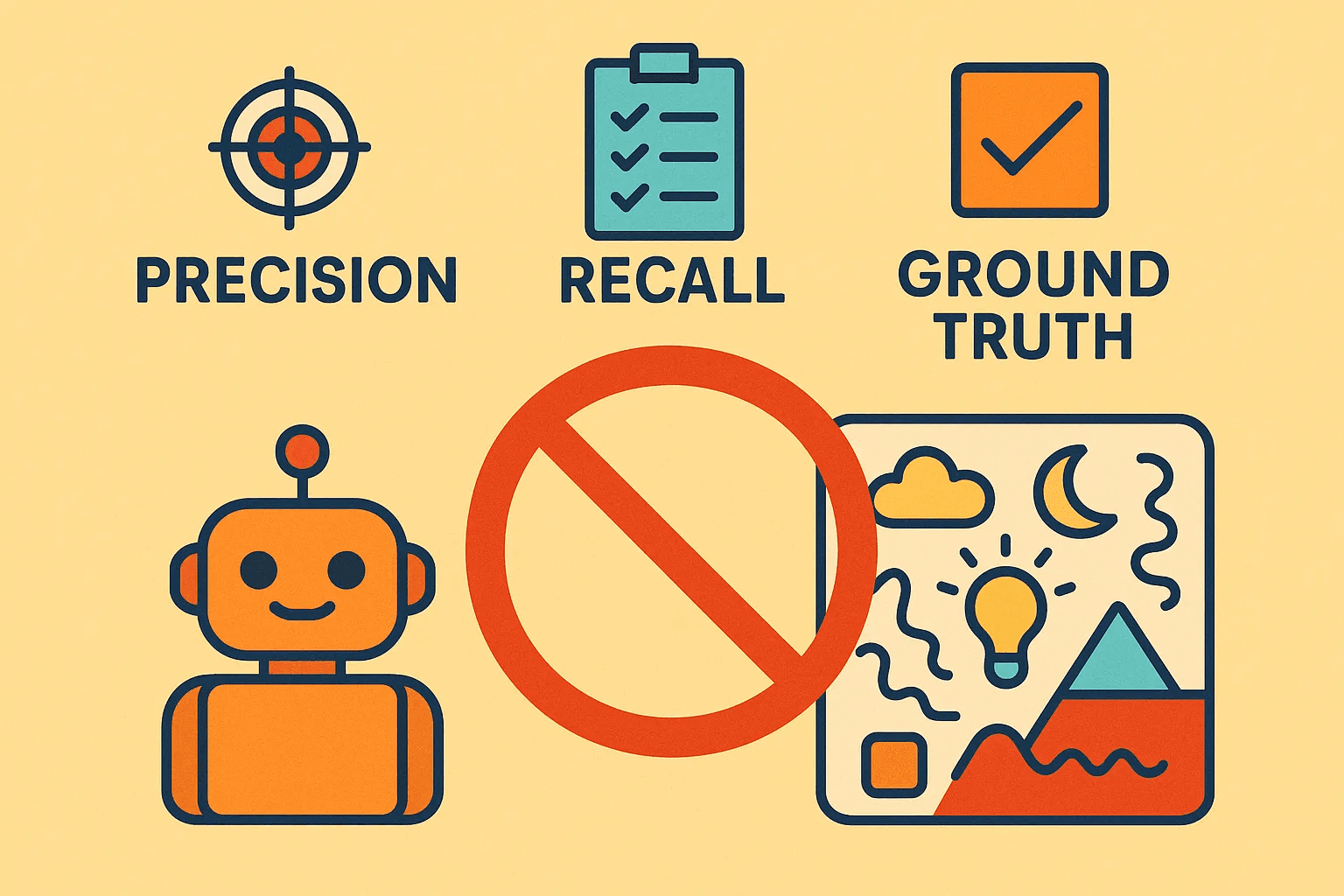The rise of large language models (LLMs) and generative AI has undeniably changed the way we think about building and interacting with AI systems. But while the models themselves have evolved rapidly, our methods of evaluating them have struggled to keep pace.
For decades, we’ve relied on traditional metrics like precision, recall, F1 score, BLEU, ROUGE, or NDCG to measure the performance of AI systems. These metrics were designed for tasks where ground-truth existed — a finite set of correct answers to compare against. But in the world of generative AI, where the output space is vast, diverse, and often subjective, those metrics are starting to feel… outdated.
The “Ground-Truth” Assumption No longer Holds
Traditional metrics such as precision and recall are becoming increasingly inadequate in many scenarios, primarily because they rely on a fundamental assumption: the availability of ground truth. This assumption was valid in the past, when AI systems lacked the capabilities they possess today. Back then, even marginal improvements in accuracy on standard benchmark tasks often required years of effort, making it necessary to establish ground-truth labels for these tasks. Metrics like precision, recall, and accuracy could then be used to evaluate how well AI systems performed relative to human-labeled data.
However, AI has now advanced to a point where it can handle a wide variety of novel and previously unseen tasks. While the performance may vary, these systems are at least capable of producing reasonable outputs for highly imaginative and unconventional tasks — tasks that do not come with predefined ground truth. Manually annotating ground truth for each new task is not only labor-intensive but also based on the outdated assumption that human performance is the gold standard. This assumption no longer always holds, as AI systems are increasingly surpassing human capabilities in many areas. As such, using human annotations as ground truth becomes logically flawed, and by extension, metrics like precision and recall, which depend on these annotations, are also rendered less meaningful.
Why Traditional Metrics Fall Short
There are two fundamental shifts happening that render many classic evaluation metrics insufficient:
1. The Disappearance of Ground Truth
In many new AI use cases, there is no single “correct” answer. When you ask a model to write a story, generate marketing copy, summarize a meeting, or answer an open-ended question — what exactly is the ground truth? Human responses vary wildly. The beauty of generative AI lies in this diversity, yet traditional metrics penalize deviation from a fixed reference.
2. AI Outputs Are Sometimes Better Than Human References
Ironically, as LLMs improve, they sometimes outperform the very human-generated references used to judge them. This creates a paradox: a model might produce a response that’s more accurate, insightful, or engaging than the human baseline — but traditional metrics might still give it a low score simply because it’s “different.”
We’ve seen this in summarization tasks where models produce cleaner, more concise summaries than the noisy human-labeled data. Or in search and recommendation systems where generated answers synthesize knowledge beyond what any single document provides.
So, How Should We Evaluate Modern AI?
This is an open question — one that the research community and industry practitioners are actively wrestling with. Several emerging approaches are being explored:
1. Human-Centric Evaluation
Let humans judge the outputs directly. This could be through:
- Pairwise comparisons (A/B testing)
- Likert-scale ratings (fluency, helpfulness, factuality)
- Task success metrics (did the user get what they needed?)
While expensive and slow, human evaluation often provides the most reliable signal for subjective tasks.
2. LLM-as-a-Judge
Increasingly, we are using models themselves to evaluate other models. Meta-evaluation setups leverage powerful LLMs to rate or compare outputs based on criteria like correctness, creativity, or tone. While this is promising, it introduces new challenges around bias, alignment, and trust.
3. Behavioral & Usage Metrics
Sometimes, the best evaluation happens in the wild:
- Engagement rates
- User retention
- Click-through rates
- User-reported satisfaction These capture real-world effectiveness beyond artificial benchmarks.
4. Robustness & Safety Tests
Rather than measuring a “score,” we might care more about whether a model is:
- Consistent
- Factual
- Safe (avoiding toxicity, bias, hallucinations)
- Resilient to adversarial prompts
Frameworks like red-teaming, stress-testing, and alignment evaluation are becoming crucial.
Do We Even Need to Evaluate AI the Same Way?
Here’s a provocative thought: perhaps we are clinging too tightly to the idea that every AI output needs a score. In creative or assistive settings, maybe the goal isn’t to optimize for a static metric — it’s to empower humans, accelerate workflows, or enable new forms of expression.
Just as we don’t rate every human conversation with an F1 score, maybe the role of evaluation in generative AI should shift from rigid measurement to continuous learning and feedback.
The Future of Evaluation is Contextual, Adaptive, and Human-Centric
There won’t be a one-size-fits-all metric for generative AI. And that’s okay.
Instead, the future of evaluation will likely be multi-dimensional, combining:
- Task-specific benchmarks
- Human feedback loops
- Real-world usage signals
- Ethical and safety considerations
- LLM-assisted judgment
In many ways, this reflects a broader truth: as AI becomes more powerful and more human-like, evaluating it will start to look less like grading homework — and more like understanding people.
And maybe that’s exactly where we need to go.
